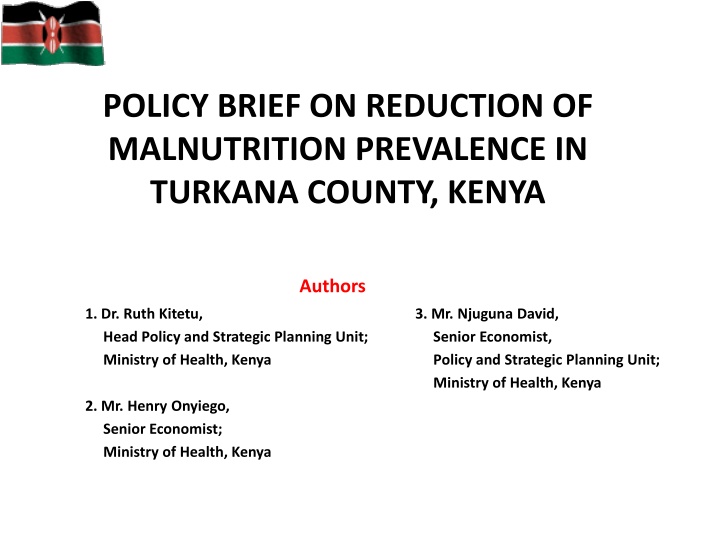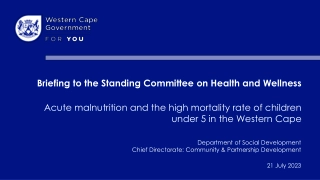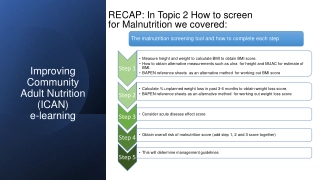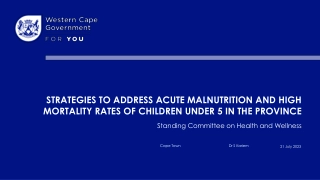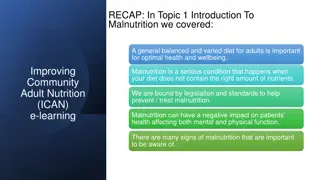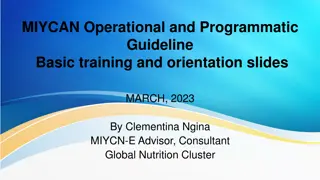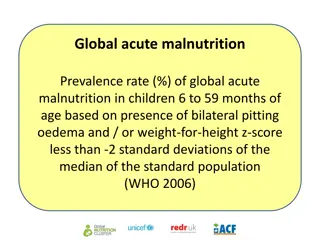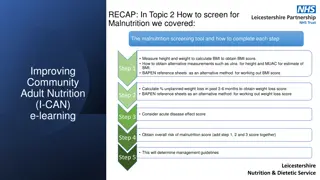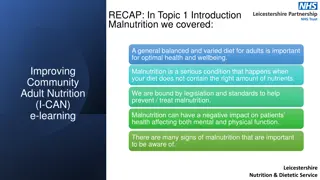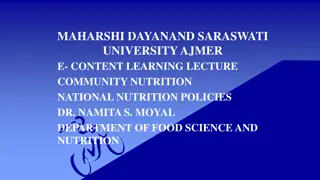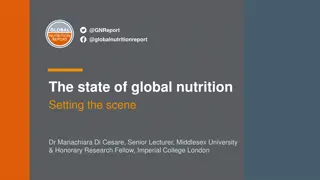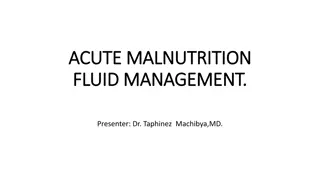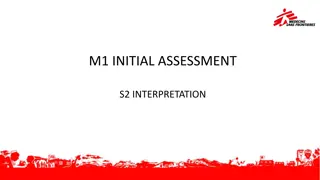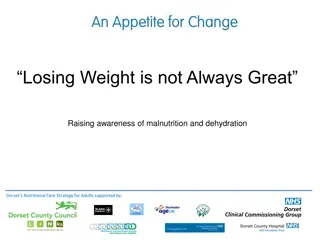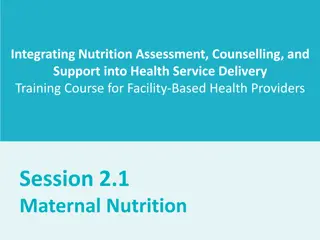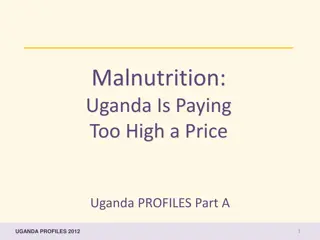Addressing Malnutrition Prevalence in Turkana County
This policy brief focuses on reducing malnutrition in Turkana County, Kenya, outlining the importance of nutrition, the impact on health and economy, and providing recommendations and policy goals to combat malnutrition effectively.
Download Presentation

Please find below an Image/Link to download the presentation.
The content on the website is provided AS IS for your information and personal use only. It may not be sold, licensed, or shared on other websites without obtaining consent from the author.If you encounter any issues during the download, it is possible that the publisher has removed the file from their server.
You are allowed to download the files provided on this website for personal or commercial use, subject to the condition that they are used lawfully. All files are the property of their respective owners.
The content on the website is provided AS IS for your information and personal use only. It may not be sold, licensed, or shared on other websites without obtaining consent from the author.
E N D
Presentation Transcript
POLICY BRIEF ON REDUCTION OF MALNUTRITION PREVALENCE IN TURKANA COUNTY, KENYA Authors 1. Dr. Ruth Kitetu, Head Policy and Strategic Planning Unit; Ministry of Health, Kenya 3. Mr. Njuguna David, Senior Economist, Policy and Strategic Planning Unit; Ministry of Health, Kenya 2. Mr. Henry Onyiego, Senior Economist; Ministry of Health, Kenya
Why the topic is important? The Constitution of Kenya 2010 provides provides for right to health. Article 43 (c). To be free from hunger and have adequate food of acceptable quality. The State has a constitutional obligation under Article 53 57 of the Constitution to Rights of special groups including Children have right to basic nutrition and healthcare. Nutrition is a vital building block in the foundation of human health and development. The right nutrition early in life, particularly in the first 3 between a woman s pregnancy and her child s second birthday helps ensure healthy growth and cognitive development, leading to a lifetime of health and economic benefits. Nutrition is not just a social determinant of health, but has a direct relationship with health status.
Why people should care? According to the Demographic and Health Surveys, stunting, wasting and underweight were at 26%, 4% and 11% in 2014 respectively. Malnutrition places children at increased risk of morbidity and mortality and is also shown to be related to impaired mental development. The effects of malnutrition are long-term and trap generations of individuals and communities in the vicious circle of poverty. Overall, Malnutrition in early childhood leads to decreased productivity in adulthood and hence low economic growth of a country. In total, the direct economic cost of malnutrition is estimated at 0.09 percent of Gross Domestic Product and 0.4 percent of overall Total Health Expenditures (or KSh 896 million (US$10.5 million) in 2012/13).
Recommendations Promote exclusive breastfeeding and complementary feeding practices; Reduce Vitamin A deficiency to levels below it being a public health problem Promote control of micronutrient deficiency diseases and disorders through intersectoral collaboration within health, education, agriculture, water and sanitation, women and youth, social protection , communities, civil society, non-governmental organizations using HiAP approach; Increase county budget for nutrition-specific activities Increase financing of community activities to promote maternal, neonatal, and child health
Policy Goals To reduce Stunting from 26% to 10 %; To reduce Underweight from 11% to 4%; Reduce Vitamin A deficiency to levels less than 10%; Reduce anemia among women and children to levels less than 20%.
Strength and weakness on the policy brief Strengths Constitutional right; Weaknesses Financial implications; Contained in the Country s Economic blueprint (Vision 2030); Coordination issues; Governance issues (Autonomy County Act, 2012); HIAP contained in the Kenya Health Policy; the policy will use a HIAP approach; Already existing frameworks for Multi-sectoral engagements. No immediate economic returns to investment.
Recommendations Promote exclusive breastfeeding and complementary feeding practices; Reduce Vitamin A deficiency to levels below it being a public health problem Promote control of micronutrient deficiency diseases and disorders through intersectoral collaboration within health, education, agriculture, water and sanitation, women and youth, social protection , communities, civil society, non-governmental organizations using HiAP approach; Increase county budget for nutrition-specific activities Increase financing of community activities to promote maternal, neonatal, and child health
Recommendations Promote exclusive breastfeeding and complementary feeding practices; Reduce Vitamin A deficiency to levels below it being a public health problem Promote control of micronutrient deficiency diseases and disorders through intersectoral collaboration within health, education, agriculture, water and sanitation, women and youth, social protection , communities, civil society, non-governmental organizations using HiAP approach; Increase county budget for nutrition-specific activities Increase financing of community activities to promote maternal, neonatal, and child health
Approaches and results Develop a specific and fully funded budget line for nutrition in the annual national budget; Increase county budget for nutrition-specific interventions including employing more human resources needed to deliver those interventions, with special attention to nutritional needs of vulnerable groups and marginalised communities; Integrate the fight against malnutrition in all related policy areas by explicitly linking country s nutrition targets, interventions and indicators within health, education, agriculture, water and sanitation, women and youth, social protection and other relevant policies; Establish a county inter-sectoral coordination mechanism to oversee the nutritional status of the population and coordinate the definition and implementation of nutrition-sensitive interventions in a plurality of sectors; Integrate nutrition-specific interventions within primary health programmes in order to address nutrition-related diseases and health problems, especially among children and mothers; Prioritise nutrition when negotiating with external donors.
